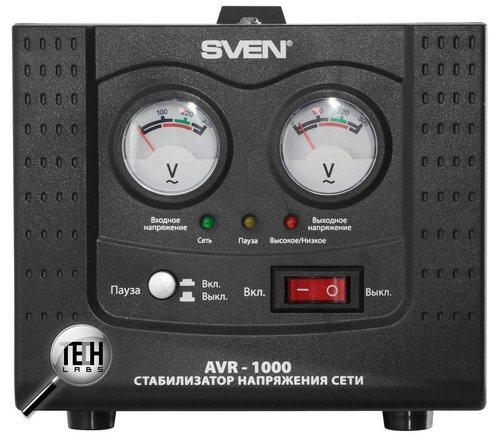
In one of the articles we have informed our readers about the new voltage regulator produced by SVEN company. The device is pretty interesting and unusual, as the lower value of the input voltage range has reached 100 V, while the output parameters are still 220 V ± 8%. The models of the line differ from one another not only in power but in appearance as well. This series AVRs are produced with digital indicators or analogue instruments. The samples with digits are a bit more expensive, as they are produced with implementation of microcontrollers, while at the same time they provide excellent possibilities for supplied power quality monitoring. Analogue voltmeters are not so convenient, because their indications are not accurate to a volt. However, the appearance of such AVRs appeals to us more. There is something of vintage look about it, and besides, their cost is almost $10 lower. Traditionally, we’ll add a review of a couple of similar AVRs to get a more complete picture.
Appearance and Design
The device is made in a solid metal 0.7 mm thick case. The metal is covered with black matt paint from absolutely all sides. To place the AVR on a horizontal surface, there are four plastic legs screwed up to the bottom, and the handle on the top facilitates its transportation.
On the front surface, there is the main power switch, three operation mode LED indicators, output voltage delay switch button, and analogue voltmeters. Their scales are graduated quite tentatively, so the instruments can show only considerable voltage deviations, and at the output it must be practically the same.
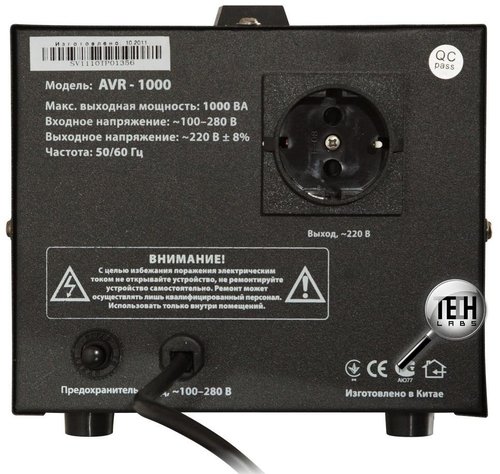
Let’s remember that delay function is used for preventing various negative moments at frequent input voltage failures. When the corresponding button is pressed, the pause is 120 seconds, when it is not – only 6 seconds.
The output of the AVR is shaped like an ordinary grounded socket. Leaping ahead, we’ll mention that there is no varistor protection inside AVR-1000. Taking into account the fact that there are usually several consuming devices, you’ll have to use a power distribution device anyway, so it’s better to connect an inexpensive surge protector. Such a multiple level protection system will be the optimal solution.
Internal Design
The design of digital and analogue voltmeter AVRs is similar; however, there are some differences. The transformer used for adjusting the input voltage hasn’t changed at all. It’s wound on a toroidal core and reliably mounted to the bottom of the case with a big screw though a rubber spacer. The transformer has temperature control (the load is cut off at overheating).
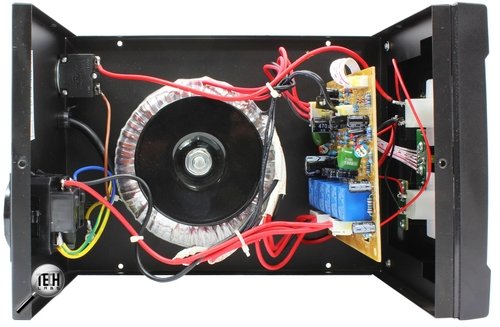
To switch between its windings, Songle SRD-12VDC-SL-C electromagnetic relays with nominal switching current up to 10 A are used. With account of maximum power, we can state the fact that the producer has provided triple strength reserve.
The electronic section is still mounted on a small chip connected to the case with two angle elements. The scheme has become simpler compared to the digital version. There are no microcontrollers, and the two microcircuits on a LM324N chip are classical assemblages from operational amplifiers. It means that the output voltage is set with simple comparison elements changing the input voltage level.
Practical Test
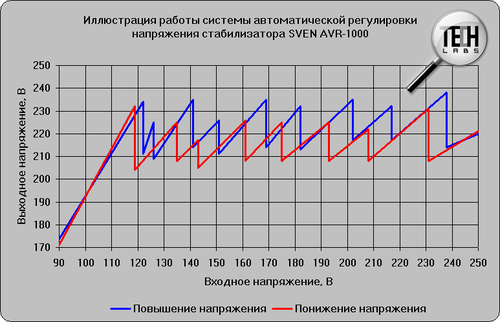
First let’s examine how precise the tested AVRs are in operation and if the claimed characteristics are observed. The results demonstrated by this AVR, as well as by the model with digital indicators (AVR-1000 LCD) deserve the highest estimate. The output power corresponds to the claimed value starting from 105 V. There are a lot of levels used, that’s why the adjustment is very fine. The consuming device is cut off if the input power reduces to 90 V or lower. Maybe, at the bottom there is too much delay, but still, SVEN AVR-1000 can operate in conditions when most other AVRs would have switched off. One should remember about the correct power selection, while if the device is operated for a long time at reduced input range, it’s necessary to enter the adjusting factor described in the manual.
Winding Changeover

The winding changes over almost instantly in all the three cases. The oscillograms show insignificant sine shape distortions 2-6 ms long, but it wouldn’t be a problem even for the weakest power supplies. In this respect all the tested devices are worth our high estimate.
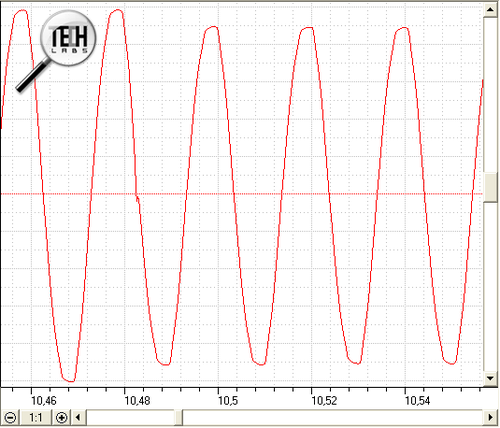
The only thing left to discuss is transformer heating, i.e. its reliability. SVEN AVR-1000 reliability doesn’t arouse any criticism – if it’s operated in home conditions and without overloads, there is no heating of internal components. The transformer core reaches the temperature of 40-45° C. If the claimed power is exceeded, the device is not switched off, but the transformer heats more intensively. However, really dangerous are long-term and sensible overloads, which are not recommended. One should understand that the larger the transformer is, the more sensible and long overloads can be. In our situation SVEN is the leader in this respect.
Conclusion
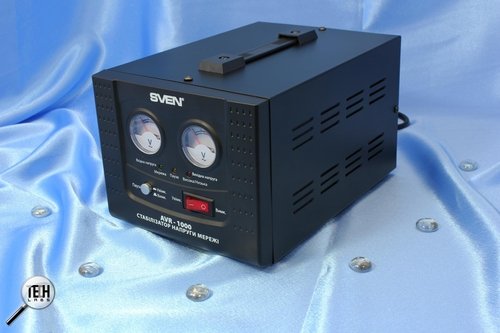
Like the more expensive model with digital indicators, SVEN AVR-1000 deserves our exceedingly high estimate. The AVR is made in a reliable metal case, and a good quality transformer allows any consumer to operate in a very wide input voltage range from 100 to 2800 V. The model can be bought for a bit more than $40, and it’s quite a good price for a 1000 VA device.
